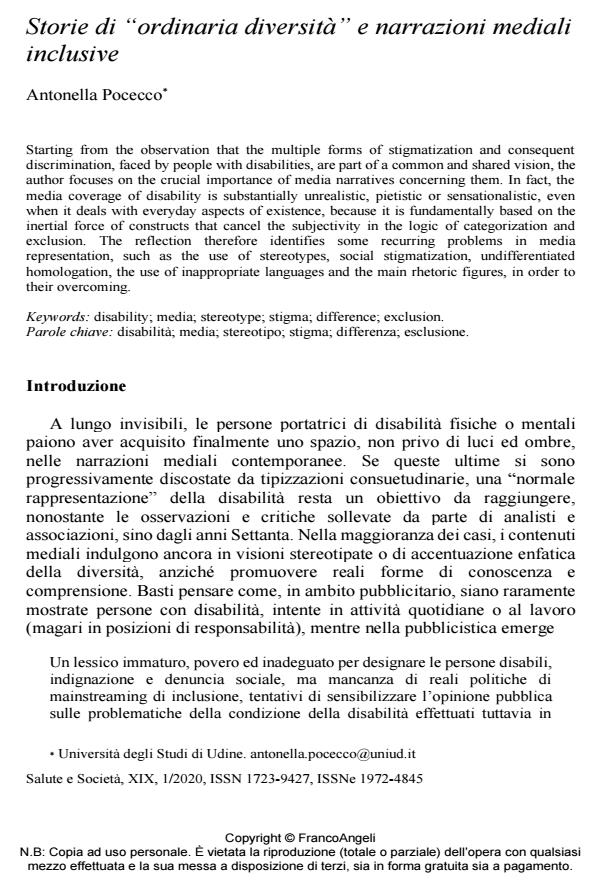Storie di "ordinaria diversità" e narrazioni mediali inclusive
Journal title SALUTE E SOCIETÀ
Author/s Antonella Pocecco
Publishing Year 2020 Issue 2020/2
Language Italian Pages 12 P. 136-147 File size 327 KB
DOI 10.3280/SES2020-002010
DOI is like a bar code for intellectual property: to have more infomation
click here
Below, you can see the article first page
If you want to buy this article in PDF format, you can do it, following the instructions to buy download credits

FrancoAngeli is member of Publishers International Linking Association, Inc (PILA), a not-for-profit association which run the CrossRef service enabling links to and from online scholarly content.
Starting from the observation that the multiple forms of stigmatization and consequentdiscrimination, faced by people with disabilities, are part of a common and shared vision, theauthor focuses on the crucial importance of media narratives concerning them. In fact, themedia coverage of disability is substantially unrealistic, pietistic or sensationalistic, evenwhen it deals with everyday aspects of existence, because it is fundamentally based on theinertial force of constructs that cancel the subjectivity in the logic of categorization andexclusion. The reflection therefore identifies some recurring problems in mediarepresentation, such as the use of stereotypes, social stigmatization, undifferentiatedhomologation, the use of inappropriate languages and the main rhetoric figures, in order totheir overcoming.
Keywords: Disability; media; stereotype; stigma; difference; exclusion.
Antonella Pocecco, Storie di "ordinaria diversità" e narrazioni mediali inclusive in "SALUTE E SOCIETÀ" 2/2020, pp 136-147, DOI: 10.3280/SES2020-002010